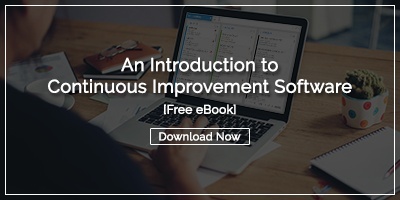 I've seen countless companies struggle with one fundamental challenge: proving the value of their improvement efforts. Einstein once said, "Not everything that can be counted counts, and not everything that counts can be counted," and I couldn't agree more. Too many organizations get trapped measuring only what ties directly to dollar amounts, missing the broader impact of their initiatives. In my experience, the most successful approach involves tracking six interconnected dimensions: ROI, product quality, time savings, safety improvements, customer satisfaction, and employee satisfaction.
I've seen countless companies struggle with one fundamental challenge: proving the value of their improvement efforts. Einstein once said, "Not everything that can be counted counts, and not everything that counts can be counted," and I couldn't agree more. Too many organizations get trapped measuring only what ties directly to dollar amounts, missing the broader impact of their initiatives. In my experience, the most successful approach involves tracking six interconnected dimensions: ROI, product quality, time savings, safety improvements, customer satisfaction, and employee satisfaction.
What Is the Most Direct Way to Calculate Financial Returns from Improvement Initiatives?
ROI - Return On Investment
The financial impact of a completed opportunity for improvement can be one of the easiest results to measure. If you’ve been using the right continuous improvement software solution to organize your improvement initiatives, it should be fairly straightforward to determine the cost of improvement compared to the post-improvement increase in revenue or decrease in expense divided by the amount that was spent to implement the idea. This quantifiable measure tells you whether your improvement initiative was financially beneficial or not.
Here's what I've learned works best for ROI measurement:
- Track both revenue increases and cost reductions—don't limit yourself to one side of the equation
- Document every implementation cost, including employee time
- Be patient with long-term benefits that won't show up immediately in your financial statements
- Use your improvement platform to maintain accurate records
While ROI provides a clear financial perspective, it's vital to remember that not all improvements translate directly into immediate monetary gains. Some improvements may yield long-term benefits that aren't immediately apparent in your financial statements.
How Can You Measure Quality Improvements in Products and Services?
Product Quality Metrics
Quality improvements fascinate me because they create what I call a "positive spiral"—better products lead to happier customers, which leads to prouder employees, which leads to even better products. There are several ways to determine if continuous improvement has had a positive impact on the quality of products and services.
Here are some ways I've seen quality tracked through both immediate and long-term indicators:
Immediate Quality Measures:
- Defect rates: Count defects caught before they reach customers
- Product returns: Track frequency and root causes
- Customer complaints: Monitor volume and severity of quality issues
- First-pass yield: Measure products meeting standards on first attempt
Long-term Quality Indicators:
- Customer retention rates
- Premium pricing ability
- Market share growth
- Brand reputation scores
The challenge with quality metrics is that some benefits—like customer delight or brand strength—are harder to quantify in the short term. But I've learned that if you're improving these immediate measures consistently, the long-term benefits will follow.
What Time-Based Metrics Should You Track for Process Efficiency?
Time Savings and Efficiency Gains
Time improvements are where I see organizations get confused between what I call "hard savings" and "soft savings." Both matter, but they require different measurement approaches.
Hard Time Savings:
- Reduced overtime costs (this hits your P&L immediately)
- Faster time-to-market for new products
- Shorter customer wait times
- Decreased manufacturing cycle times
Soft Time Savings:
- Increased output per employee hour
- Enhanced capacity without adding resources
- Freed-up employee time for strategic projects
- Improved work-life balance
Don't dismiss soft savings. When you free up 30 minutes a day for each of your 100 employees, that's 50 hours of additional capacity per day. The value becomes real when those employees use that time for innovation, customer service, or other value-added activities.
How Do You Quantify Safety Improvements from Continuous Improvement Programs?
Safety Impact Metrics
Organizations have a responsibility for the safety of every customer, patient, employee, or guest who enters their locations, as well as those who buy their products or services. Safety concerns are often a key reason that companies adopt a continuous improvement program, so don’t forget to measure the impact in this dimension. Of course, you can't easily measure the financial impact of things like "lawsuits avoided" or "potential missed days of work," but even counting the safety improvements and reporting that number is useful information in evaluating the impact of continuous improvement. One way organizations measure the impact of safety is a concrete reduction in things such as liability insurance costs or workers' compensation costs.
What Are the Best Methods for Measuring Customer Satisfaction Improvements?
Customer Satisfaction Assessment
According to a study by Bain & Company, 80% of companies say they are delivering superior customer service. Sadly, only 8% of customers agree. This is why it is essential to measure how improvements impact customers rather than just taking a guess. To measure the impact of improvements on customer satisfaction, consider various methods:
-
Surveys: Regular customer surveys can help you gauge their satisfaction levels and gather valuable feedback.
-
Customer Service Ratings: Tracking customer service ratings, response times, and complaint resolution can provide insights into customer satisfaction.
-
Focus Groups: Engage customers in focus groups to gain a deeper understanding of their needs, desires, and pain points.
-
Sales Increase: An increase in sales can be a strong indicator of improved customer satisfaction. Happy customers are more likely to make repeat purchases and recommend your products or services to others.
Remember that improving customer satisfaction is an ongoing process, and measuring this dimension is essential for aligning your efforts with customer expectations.
How Can You Effectively Measure Employee Satisfaction and Engagement?
Employee Satisfaction Indicators
There are often disconnects between how satisfied employees are and how satisfied management thinks they are. Measuring employee satisfaction can be done through:
-
Employee Surveys: Regular surveys can gauge employee satisfaction and identify areas for improvement.
-
Retention Rates: High employee turnover rates can indicate dissatisfaction, while low turnover rates suggest contentment.
-
Productivity and Engagement: Productive and engaged employees are often a result of improved job satisfaction.
I've noticed that organizations with strong continuous improvement cultures see employee satisfaction scores increase over time. When people feel their ideas matter and their voices are heard, everything else gets better.
What Additional Metrics Should Your Organization Consider?
Customized Measurement Strategies
Every organization I work with has unique needs. Beyond the six core areas, here are some other industry-specific and strategic metrics I see:
Industry-Specific Metrics:
- Healthcare: Patient satisfaction scores, readmission rates, clinical outcome improvements
- Manufacturing: Overall equipment effectiveness (OEE), yield rates, supplier quality metrics
- Retail: Inventory turnover, customer acquisition cost, seasonal performance
- Technology: System uptime, user adoption rates, development cycle times
Strategic Alignment Metrics:
- Progress toward organizational goals
- Competitive positioning improvements
- Market share growth
- Innovation pipeline strength
The key is choosing metrics that align with your strategic objectives and actually drive behavior change.
Frequently Asked Questions
What's the biggest mistake organizations make when measuring improvement impact?
The biggest mistake organizations make is focusing only on financial metrics. Companies that track just ROI miss the complete story of improvements in quality, safety, employee satisfaction, and customer loyalty that drive sustainable success.
How do you measure improvements that don't have obvious financial benefits?
Organizations should use proxy metrics and leading indicators such as employee engagement scores, customer satisfaction ratings, and safety incident reductions. These metrics often predict future financial performance and provide valuable insights into organizational health that eventually translate to bottom-line results.
Should small improvements be measured the same way as large initiatives?
Measurement approaches should be adjusted based on scope and resources. Large initiatives warrant comprehensive tracking across all six dimensions, while smaller improvements might focus on 2-3 key metrics. The crucial element is maintaining consistency in methodology.
How often should improvement metrics be reviewed and reported?
Best practice includes monthly reviews for operational metrics, quarterly assessments for strategic measures, and annual comprehensive program evaluations. Real-time dashboards should be available for continuous monitoring, but organizations should avoid overwhelming stakeholders with too much data.




Add a Comment